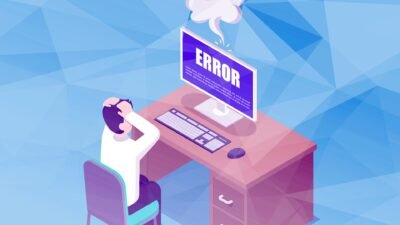Windows PC Outage: Many restarts solve the problem

What some sources are calling the “biggest IT outage of all time” can apparently be resolved in many cases using a simple and well-known method: turning the Windows PC off and on again. Channel 4 UK
Update error paralyzed Windows PCs worldwide
The faulty update from security service provider CrowdStrike, which has paralyzed millions of Windows PCs worldwide since last night with a recovery blue screen, can be solved with enough patience in the simplest possible way: with a restart. Officially, CrowdStrike recommends that the affected PCs should be restarted in recovery mode or safe mode in order to then search for a file with a name like “C-00000291*.sys” and delete it before restarting.
In a not insignificant number of cases, however, this is not possible without further ado, for example because encryption using BitLocker is present or the necessary administrator rights to delete the faulty update file are not available. According to reports from some IT professionals who have to deal with affected computers, a simple restart can already remedy the problem.
Just be patient: sometimes dozens of restarts are necessary
In some cases, several restarts are necessary, although according to reports, it may take fifty attempts to succeed. The restart method would confirm one of the oldest Windows memes: if there are problems, restart the computer! In the comedy series “The IT Crowd”, this was famously answered with the now world-famous question “have you tried turning if off and on again” immortalized.
The reason the reboot method can work is because of how CrowdStrike delivers its updates to the systems affected by the outage. After each boot, a check is performed to see if an updated update file is available for CrowdStrike’s security solution.
Updated update file available
If this is the case, it is automatically downloaded and used. Since CrowdStrike has now replaced the faulty file from this morning and is therefore delivering a new version, this may simply land automatically on the respective PC after the restart. Of course, the number of requests to CrowdStrike’s update servers is currently gigantic, after all, millions of computers all over the world are struggling with the problem caused by the faulty update, so this method does not always work. In addition, the updated update file must be able to be downloaded as quickly as possible over the Internet when the respective computer is started.
Computers with Internet access via cable are therefore more likely to be successful in doing this than those with Internet access via WLAN. Of course, there are also enough reasons not to use the restart method as a possible solution. However, it may be helpful for companies and authorities where the IT departments simply do not have the personnel capacity to manually free each individual computer of the faulty file using safe mode. Even with systems that are only managed remotely, the problems could be solved by someone other than the responsible administrator performing multiple reboots. Just one question: “Have you tried turning it off and on again, today?”











